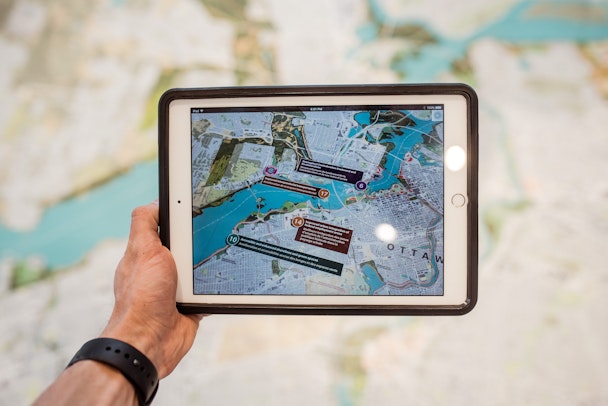How brands are using webAR to build the ‘real-world metaverse’
For The Drum’s deep dive into AI and web3, Kevin Straw of AR specialist agency Niantic, along with Tool of North America’s Dustin Callif, argues that a ‘real-world metaverse’ is emerging around us.

Is a 'real-world metaverse' popping up all around us? / Tobias via Unsplash
Most brands think of the metaverse as Roblox or Decentraland, and for good reason. Coverage of partnerships and activations within those spaces has been grandiose, if not fleeting relative to the longevity of the metaverse itself.
But there’s another interpretation of the metaverse that most brands are overlooking; one that can be more powerful. A digital twin of our physical world (parks, streets, etc.) is ready to be activated by brands.
We’re already at an inflection point where brands can activate this digital layer using augmented reality (AR), today. This digital twin has been coined the ‘real-world metaverse’ because it allows consumers to experience the metaverse by exploring and engaging with their real-world surroundings.
Advertisement
The unlocking power of webAR
There are two primary ways that people can access AR using their mobile phones: via a mobile app or through a web browser.
Through dedicated mobile apps, brands can create augmented reality campaigns tied to geolocation. For example, we can create a virtual version of Times Square so that when someone is walking around, they can see augmented reality graphics mapped directly to buildings, signs, and more using their phone’s camera.
The second route into the real-world metaverse is through webAR, which allows consumers to experience AR campaigns created by brands via their browser, from anywhere in the world – no app necessary.
Advertisement
AR first made a big splash in 2013 when Google Glass arrived in the market to much fanfare. When the product proved premature for the real world, the technology took a backseat.
These early efforts were all limited by the fact that an app or hardware was required. WebAR breaks that need by allowing consumers to engage with an experience through their web browser. This frictionless entry point provides more access and makes promotion and use far easier. At Niantic and Tool of North America, we’re seeing more brands using webAR to create moments at events, retail locations and other physical locations that layer on top of the physical world.
With scale comes practical business applications and real metrics that can move a brand forward. Vans used webAR this past holiday season, enticing shoppers into their stores through an innovative video experience at more than 500 locations nationwide. Coca-Cola launched a concert on a can in 2022 to launch its newest product, selling out in a matter of days. Bloomingdale’s gained a +22% conversion rate to shop and a +38% engagement rate, through a campaign tied to its 150th anniversary. Khaite saw a 4x increase in shoe sales with its SS21 webAR-enabled lookbook.
Suggested newsletters for you
Overcoming the ‘trough of disillusionment’
Examples like this are common but haven’t generated massive coverage because they occur in controlled marketing campaigns. Often, webAR activations are games, sampling experiences, previews of products, etc. But they serve the brands that use them by returning reams of data from dwell time and click-through rate to purchase intent and actual spend.
The metaverse has been put in a corner, to be sure. That’s to be expected. All promising emerging technology will at some point reach a peak and then hurtle down into the trough of disillusionment. But that’s when the real innovation begins, when companies invest in making the technology more practical – both for consumers and the companies they partner with that want to demonstrate technological acuity. What’s coming is a more robust metaverse, one that turns the entire world into a playground.
The emergence of practical innovation in the real-world metaverse is coming more quickly than we expected, thanks in large part to the brands that are quietly putting the technology to work and driving real ROI in the process. They are benefiting first and foremost and will be far ahead of the market when consumer interest in the metaverse is inevitably reignited.
While it’s easy to be distracted by the new shiny object that is generative AI, don’t take your eye off the prize in front of you: the real-world metaverse. Just look around, at retail and event locations, and public locations like parks and streets. The world is your oyster and, now, it’s up to you to figure out the most magical ways to bring it to life for your brand. The metaverse is upon us – just not the metaverse that was so hyped a year ago.
For more hot takes and cold hard looks at the emerging tech landscape, check out The Drum’s deep dive on AI to web3.
Content by The Drum Network member:

Niantic
Niantic builds augmented reality technology that powers the real-world metaverse. Its Lightship platform is the world’s first scaled AR platform, enabling developers...
Find out more
